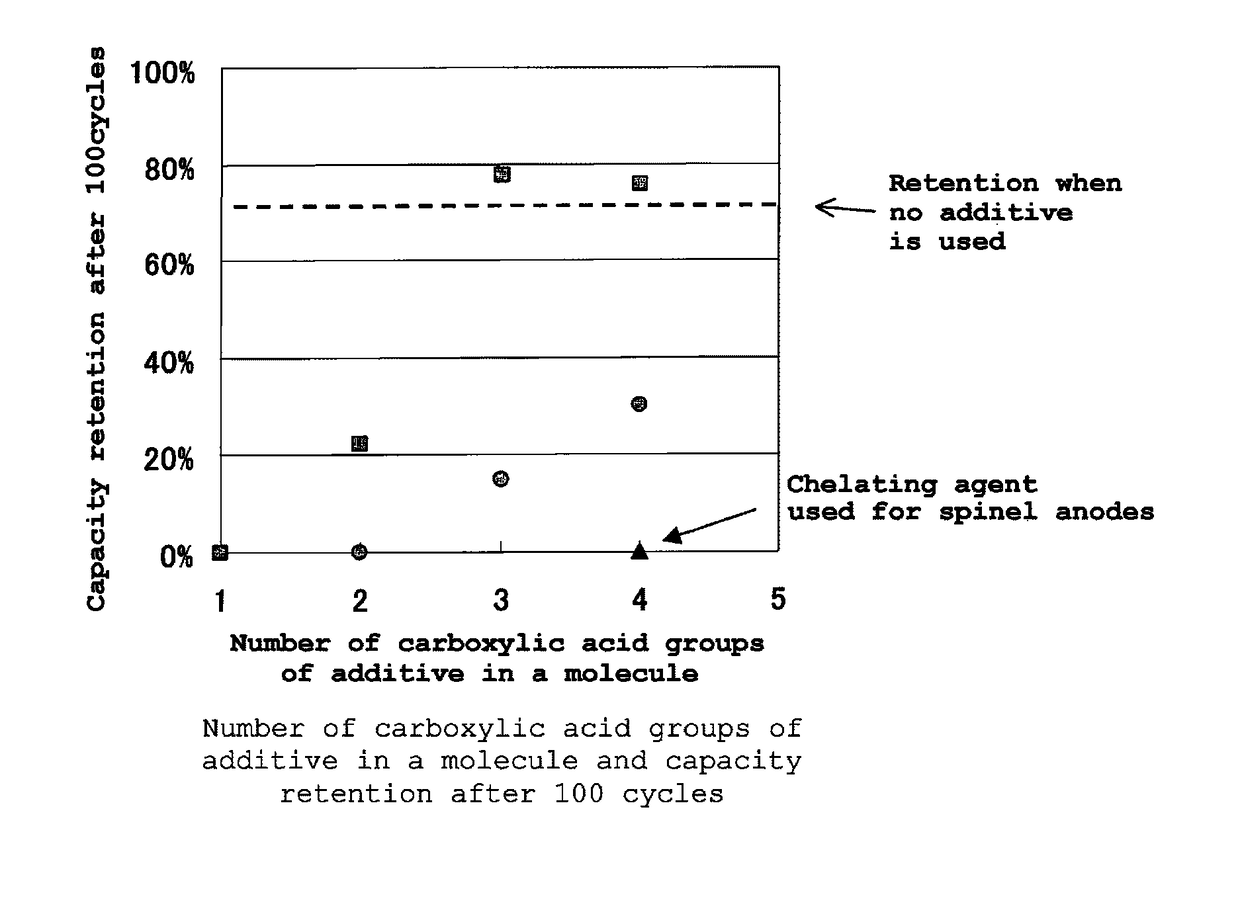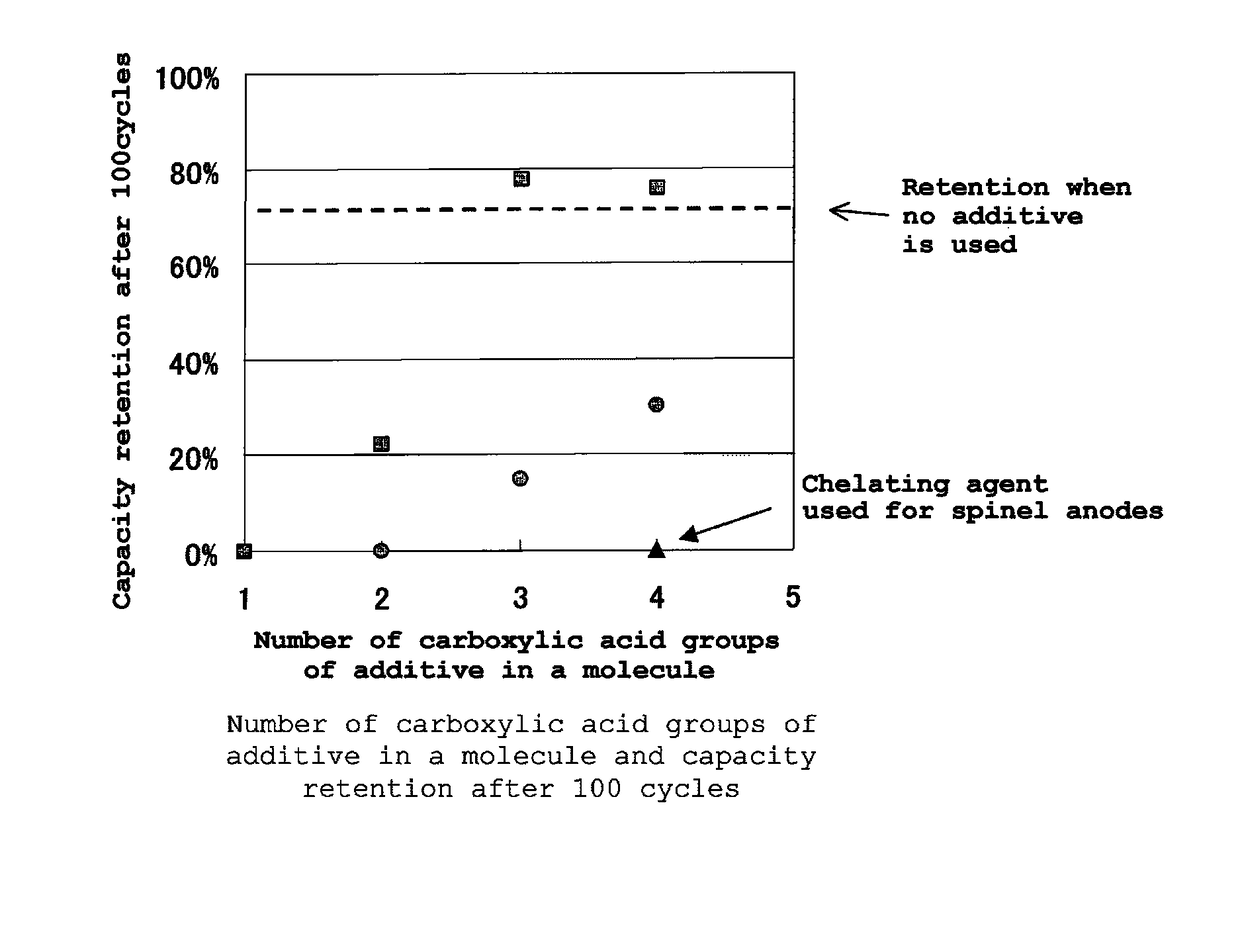Electrolytic solution for lithium ion secondary battery, and lithium ion secondary battery
a lithium ion secondary battery and electrolytic solution technology, applied in the direction of electrolytic capacitors, cell components, electrochemical generators, etc., can solve the problems of eluted transit ions not being efficiently trapped with this small amount, degrading battery performance, etc., to improve the cycling characteristics of the battery, prevent the degradation of the anode performance, and increase the charge capacity
- Summary
- Abstract
- Description
- Claims
- Application Information
AI Technical Summary
Benefits of technology
Problems solved by technology
Method used
Image
Examples
examples
[0034]Hereinafter, the present invention will be described in more detail with inventive examples and comparative examples. However, the present invention is not limited to those examples.
##ventive examples 1 to 7
Inventive Examples 1 to 7
[0035](Preparation of Anode) An anode slurry was prepared by blending graphite powder, acethylene black as an conductive additive and PVDF as a binder together in an mass ratio of 90:5:5, and then adding and mixing thereto N-methylpyrrolidone as a solvent. A copper foil was used as a current collector. The obtained anode slurry was applied thereto to a thickness of 30 μm, and was sufficiently dried. The slurry was dried in vacuo for 24 hours to obtain the desired anode.
[0036](Preparation of Cathode) A cathode was prepared by the following method. As a cathode active material, Li1.85Ni0.18Co0.10Mn0.87O3 (x=0.3, α=0.40, β=0.22 and γ=0.38) was used. A cathode slurry was prepared by blending the cathode active material, acetylene black as a conductive additive and PVDF as a binder together in a mass ratio of 90:5:5, and then adding and mixing thereto N-methylpyrrolidone as a solvent. An aluminum foil was used as a current collector. The obtained cathode slurry w...
PUM
| Property | Measurement | Unit |
|---|---|---|
| mass % | aaaaa | aaaaa |
| thickness | aaaaa | aaaaa |
| charge capacity | aaaaa | aaaaa |
Abstract
Description
Claims
Application Information
 Login to View More
Login to View More - R&D
- Intellectual Property
- Life Sciences
- Materials
- Tech Scout
- Unparalleled Data Quality
- Higher Quality Content
- 60% Fewer Hallucinations
Browse by: Latest US Patents, China's latest patents, Technical Efficacy Thesaurus, Application Domain, Technology Topic, Popular Technical Reports.
© 2025 PatSnap. All rights reserved.Legal|Privacy policy|Modern Slavery Act Transparency Statement|Sitemap|About US| Contact US: help@patsnap.com


